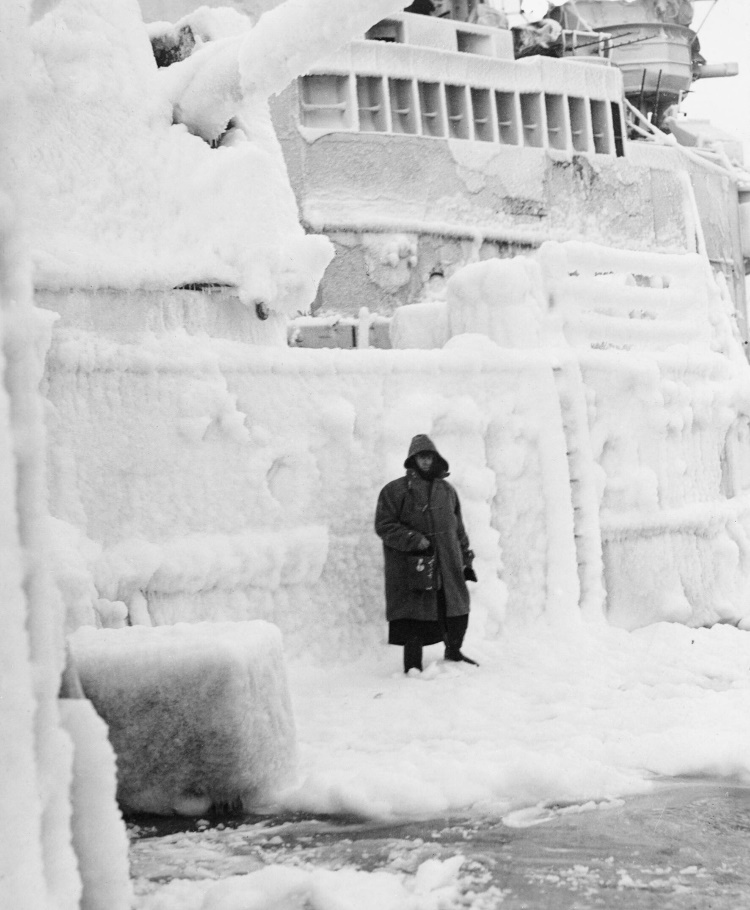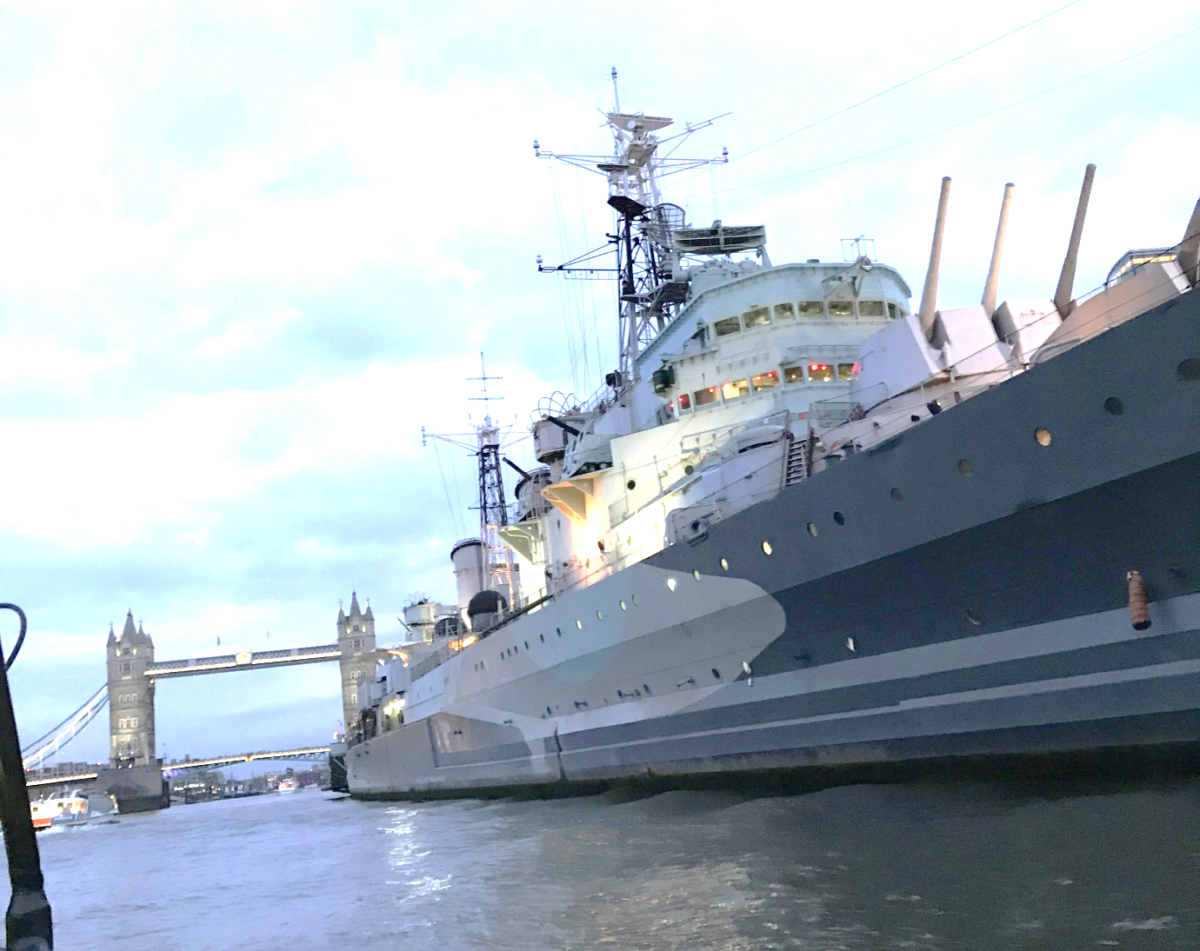17 March 2018 (St Patrick’s Day) marks the 80th anniversary of the launch of HMS Belfast. As one of our country’s most iconic warships she has a fascinating service history including the vital Arctic convoys, support to the D-Day landings, the Cold War, the Korean War and beyond. In 1971, she became a museum ship on the Thames, run by the Imperial War Museum (IWM).
Today, HMS Belfast fights a battle of a different nature: corrosion of her hull as a result of exposure to the marine environment. At Beckett Rankine, we are working for IWM to assess the condition of the ship’s hull (both internal and external) and to make recommendations to ensure her long term conservation. This work has involved investigating and registering all of the tanks on the lower decks and diving inspections to observe the general condition and locate any defects of her hull.
Diving in the Thames during one of the coldest (and snowiest!) weeks London has seen in recent years was challenging for several reasons: the variation in the predicted tides; the lack of visibility underwater; the frozen communications equipment and freshwater hoses, to name a few.
The Thames is particularly murky, which makes visibility during dive inspections limited, so we used a “freshwater box” to attach to the hull of the vessel. The box was sealed so we could flush freshwater through it, clearing that area to capture still photo and video GoPro footage. Early morning and late night shifts to match the tides were worth it – even battling “the beast from the East” – to get the sunrise views at Tower Bridge. There were times when it felt a bit like we were back on one of HMS Belfast’s 2nd World War Arctic Convoys!


Working inside a vessel with such a rich history has been fascinating and significantly warmer. London Diving Services, whom we engaged to undertake the dive surveys, also have confined space expertise, so we were able to work with them to enter and inspect the internal tanks. As the ship contains much asbestos, we had to exercise caution in areas that were unsafe to enter before treatment. We located the access hatches, which were often hidden away in obscure corners of the ship, opened and sampled the contents of the tanks, and took ultrasonic thickness readings of the steel in a number of critical tanks. We combined this data with the external thickness readings taken during the dive inspections, to build a detailed picture of the current condition of HMS Belfast and report back to IWM.
We continue to be excited about working on this historic vessel and look forward to working with naval architects Wyn Davies and Amgram on future projects. Here’s to the next 80 years… And a very happy birthday to HMS Belfast, from all of us at Beckett Rankine!



